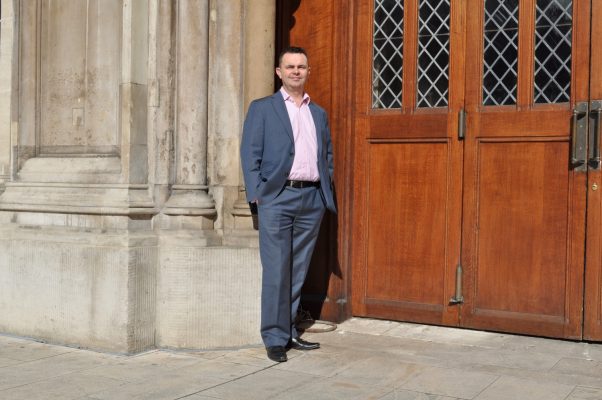SQS, the London-listed software quality specialists, has partnered with trading software specialist TraderServe, to provide investment firms with a test service for compliance with sweeping new MiFID II rules regulating algorithmic trading.
Although the deadline for the implementation of MifID II has been delayed for a year until the start of 2018, SQS and TraderServe believe that many firms are behind the curve on the new algo testing requirements, focusing instead on MiFID’s broader regime for transparency and best execution in securities trades.
If firms are found to contribute to a disorderly market, they can be fined up to 15% of their annual turnover under the EU’s new Market Abuse Regulations (MAR) which come into force in July 2016.
Firms that fail to test and self-certify their algorithms properly are playing “flash crash roulette” says SQS sales director Eddie Thorn. “A lot of people seem to believe these rules just cover the high frequency traders. But it’s far wider than that,” he says. “The rules cover all forms of electronic trading.”
London-based TraderServe, founded by former HSBC trading quants Nicholas Idelson and Nicholas Hallam in 2000, will provide its AlgoGuard test environment to the new partnership, while SQS will provide marketing and certification consultancy to potential clients.
MiFID stipulates that algo traders must have effective systems to test their systems under stressed conditions, such as a sudden drying up of market liquidity. “This represents a completely new approach to the way that such firms have previously tested their algorithms and in the types of test environments required in order to carry out this testing,” says SQS’s Thorn. “People don’t understand how difficult testing is, and how significant it is in MiFID.”
Dummy exchange
AlgoGuard is designed to emulate a live market — a dummy exchange – which will respond dynamically to the algorithm being tested, and can replicate the actions of disorderly markets and antagonistic algorithms; for example algorithms designed to provoke other firms’ algorithms into helping to drive down prices.
The object is to monitor the performance of tested algorithms against agreed pass or fail levels of market disorder provocation — data that can then be passed on to regulators. A key advantage of AlgoGuard, says TraderServe’s Idleson, is that this is achieved without the customer having to reveal the code behind their algorithms, which are tested in in environments delivered via an API.
A further complication is that the MiFID rulebook does not define exactly what constitutes a disorderly market is, other than it is the absence of a fair and orderly market. So the onus is very much on firms to examine their own standards.
The European Securities Markets Association (ESMA) was mandated under MiFID to draft technical standards for the implementation of the EU’s new rules, which will be binding on all member states, and produced a final draft of those standards last September. ESMA did clarify at that point that pure investment decision algorithms that are executed by non-automated means are out of the scope of the new testing requirements. The Association also made clear that testing could be conducted by a third party firms or a trading venue or exchange.
SQS’s Thorn estimates that there are around 400 firms in the UK and 1000 across the EU that will need to test their algorithms. He’s hoping that AlgoGuard can win a significant share of that market as firms congregate around a methodology they can share. “There will never be an industry standard, but there may be safety in numbers.”
While European exchanges have an exemption from the providing full ago testing capabilities themselves under MiFID II, the SQS and TraderServe partners hope that they will offer white label testing as a service to the customers as a service to their customers who must carry out and certify this new type of non-live testing before placing live trades at a venue.
2015 result
SQS, which is headquartered in Germany and listed on London’s AIM market as well as the German Stock Exchange, announced preliminary results for 2015 on March 8th. Organic revenue growth across the group was 7.5%, and gross profits adjusted for acquisitions were up 12.8% to €101.0 million.
CEO Diederik Vos said that 60% of revenues now coming from managed services and specialist consultancy services businesses, where margins are higher than those in the company’s regular testing services business. However, he added that margins in testing were “showing stability” and that testing contracts offer cross-selling opportunities into other business divisions.
Vos said that recent research has valued SQS’s addressable market at $15 billion with more evidence suggesting: “the increasing significance of quality services for business critical end-to-end processes …. not just software applications in isolation.”
Back in September, shares in SQS plunged in value by 15% to a low of 483p immediately following the company’s announcement of disappointing results for the first half of 2015. The company warned that it’s first-half results would disappoint. At that time SQS revealed that gross margins in its regular testing services (RTS) business had fallen sharply, to 26.4% compared to 33% in 2014.
The company said that some larger client engagements had been a cause of the decline, and had disengaged from those contracts and reduced staffing levels as a result. SQS said it will continue to focus on increasing the average revenue from its client bases, having reduced the total number of active clients to 385 from 423. Allianz, Commerzbank, Generali and UBS are among the financial sector clients of SQS.
SQS shares traded at 520p on March 8th, with the recovery from September’s low reflecting some confidence among investors that the company’s broad strategy of focusing on fewer, higher-margin, customers will pay off.
Additional information: to read TraderServe’s briefing notes on the May 2010 flash crash and its implications for non-live testing, click here.




